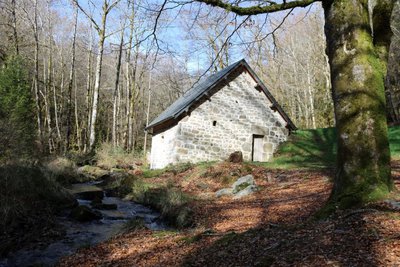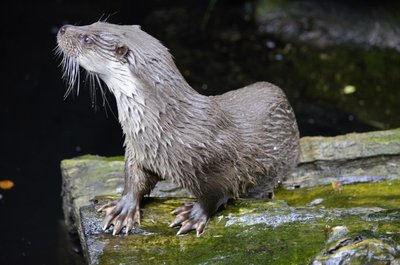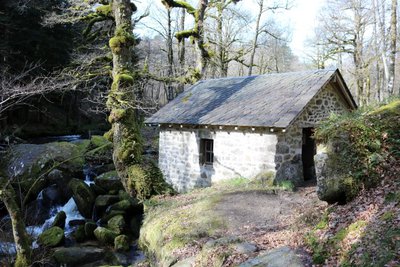The waterfalls and mills of the Deiro

Soudeilles Blue markers
Blue markers
The waterfalls and mills of the Deiro
Easy
1h
1,9km
+77m
-77m
Loop
Embed this item to access it offline
In a cool, green environment, the waters of the Deiro flow in cascades between the granite outcrops, with an energy once exploited by two mills that used to grind rye and buckwheat.
3 points of interest

Moulin de Laffont - Simon BAYART DECRAND CC VEM  Heritage site
Heritage siteThe Laffon Mill
In this land of water, mills appeared in the Middle Ages. In the 19th century, Corrèze had hundreds of them. Of modest size, the mills are located on small rivers. The river is diverted by a channel (the mill race) to a reservoir (the millpond) located above the mill. Its operation was simple and ingenious: a horizontal wooden wheel with scoops, placed under the mill, drove the wheel, turning on the frame, to grind rye and buckwheat.
Loutre - CCVEM  Fauna
FaunaThe otter
In the shelter of the rocks of the Deiro, a discreet and fascinating animal is hiding: the European Otter. It feeds on fish, but especially on amphibians or crayfish. This animal, which spends a lot of time playing, is a witness to the quality of the water and the preservation of the environment. Once prized by trappers for their fur, otters had almost disappeared. Today, the otter is present on all the watercourses.
Moulin de Contensousas - Simon BAYART DECRAND CC VEM  Heritage site
Heritage siteContensousas Mill
The mill was built around 1860 by the Contensousas family. Once covered with thatch, the mill operated throughout the seasons, according to the family's need for flour. The precious grains stored in the attics had been brought down by oxen to the mill. The water released from the mill pond would drive the mechanism. Rye flour was used to make bread loaves and buckwheat flour for pies. The mill stopped turning in 1950.
Description
- From the car park, go up by road for 30 m and, on the left of the information panel, go down by the path along the edge of the field. Continue into the beech woods, cross the stream and descend to the river, the Deiro.
- At the mill at Lafon, turn right, pass the sign (on the diversion of the watercourse) and continue upstream. After the first waterfall, climb the stairway to the next waterfall.
- At the Contensousas mill (exterior panel explaining how it works: push the door to discover the old mechanism), continue along the path that runs alongside the old dam on the right, then take the broader path on the right. It rises through the undergrowth and then in the fields. Go up by road to the right to Monjanel and, at the crossroads, go down to the hamlet on the right (1693 building with a large "bassière" which used to be used as a place of worship) before reaching the starting point again.
- Departure : South of the hamlet of Monjanel, 50 m from the last barn
- Arrival : South of the hamlet of Monjanel, 50 m from the last barn
- Towns crossed : Soudeilles
Forecast
Altimetric profile
Information desks
Carrefour de l’Epinette, 19550 Lapleau
1 rue Joseph Vialaneix, 19300 Egletons
Access and parking
8 km north of Egletons by the D165 (in the direction of Davignac), D119 (towards Péret-Bel-Air) and after the A89 the route de la Braute and du Monjanel on the left.
Parking :
South of the hamlet of Monjanel, 50 m from the last barn
Report a problem or an error
If you have found an error on this page or if you have noticed any problems during your hike, please report them to us here:
